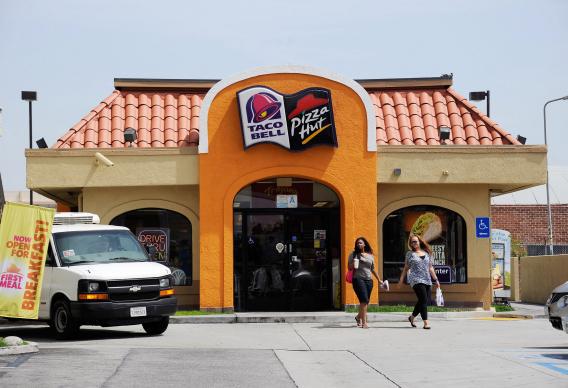Taco Bell’s line of Doritos Locos tacos have been a huge hit, driving big increases in sales with the basic concept of replacing a hard taco shell with a Doritos-flavored shell. But Taco Bell CEO Greg Creed wants the world to know that what it’s seen from the partnership is just the beginning.*
“People who love Taco Bell eat a lot of Doritos, and people who eat a lot of Doritos eat at Taco Bell,” he tells Mary Avant of QSR magazine. And that seems correct. The article does not specifically note this is a factor driving the demographic overlap, but in my experience, both Doritos and Taco Bell are greatly enjoyed by people who are high on marijuana. In particular, as legal restrictions on pot are loosened, the odds are good that it’s going to become very cheap, and people will smoke more of it. A key public health question is whether increased pot consumption will crowd-out alcohol consumption (substitution) or crowd it in (complementarity), but it’s clear that the impact on consumption of Doritos and Taco Bell will be positive.
So naturally, Taco Bell is investing resources on additional innovation in this space:
In addition to a yet-to-be-launched spicy Flamas flavor, Creed says, the platform has an extended runway for adding shell flavors and switching up ingredients inside the shell. “At the moment, what we’ve done is introduce these different flavored shells, but the ingredients inside have been the same—ground beef, sour cream, lettuce, tomatoes,” he says. “We’re going to go back now and say, ‘What would make sense within the Taco Bell menu and all of our ingredients to put inside a Nacho Cheese Doritos [taco]? What would make sense within a Cool Ranch Doritos [taco]?”
The other interesting point raised in the article is that in many ways Taco Bell’s competition with Chipotle is overstated. Those are both national chains with a “Mexican” concept, but the customer base is quite different. According to Avant, the real threat to Taco Bell comes “from regional competitors like Taco Bueno in the Midwest and Taco Cabana on the West Coast.” If you ignore the questionable geography of that claim—both chains have the preponderance of their locations in Texas and the westernmost Taco Cabana is in Albuquerque, N.M.—that seems potentially correct. Taco Bueno, in particular, offers a very similar kind of vibe but with somewhat less “this food makes me feel ill” factor. Taco Cabana, by contrast, really stands head and shoulders above the competition in terms of its innovative tortilla machine. I’m not sure why they’ve been so timid in terms of expanding out of their core region, but I think they’re poised to take America by storm.
Correction, Aug. 5, 2013: This post originally misspelled Taco Bell CEO Greg Creed’s first name.
